We promote innovative actions for the conservation and efficient use of natural resources, comprehensive management of environmental impacts and due diligence throughout the value chain. Through these actions, we aim to ensure the continuity of the business over time, taking into account the expectations of our stakeholders and the timely management of risks. Learn more about our Environmental Policy.
Our Environmental Management System is certified under ISO 14001:2015. This ensures that our organization’s operation and maintenance activities comply with the applicable regulations in force and that their socio-environmental criteria promote, in all our stakeholders, innovative actions for the conservation and efficient use of natural resources, the mitigation of negative impacts and the enhancement of positive impacts.
See the certificates.
Our Due Diligence is carried out by interdisciplinary teams made up of financial, legal and socio-environmental employees of the organization. Learn more about our guide by clicking here.
By clicking here, here you will find a summary of the environmental impact assessments (EIA) of our assets where we operate.
At the end of 2020, Colombia assumed the goal of being carbon neutral by the year 2050, an ambitious goal that seeks to significantly counteract climate change; Celsia, the energy company of Grupo Argos, joined this goal and is one of the first companies in the country to achieve zero carbon footprint through different actions.
The following is an ABC of what Carbon Neutral is and how Celsia achieved it.
What is CO2?
CO2 stands for carbon dioxide and is one of the greenhouse gases (GHG), which is the main cause of climate change, as it traps solar radiation and overheats the earth.
What are the consequences?
Droughts, loss of biodiversity, extreme weather events and melting glaciers are just some of the effects of global warming. In humans, CO2 is also harmful in high concentrations.
What generates CO2?
All living beings generate CO2; however, among the main industrial activities that emit these gases are those that use coal, oil and gas in their production processes, as well as the use of gasoline and other fossil resources needed in different means of transportation: land, air and water.
The meaning of being carbon neutral
It is to comply with the commitment to reduce emissions associated with operations and offset the remaining CO2 emissions, with the purpose of counteracting the effects of climate change and being aware of the ethical responsibility with customers and stakeholders that are impacted, thus achieving a balance between emissions generated and those that are removed from the atmosphere with the purpose to leave a zero balance for neutral.
What did the company do?
The following actions were carried out, achieving a zero balance of Celsia’s CO2 emissions to the atmosphere:
In March 2021, the company signed the alliance of the electricity sector for carbon neutrality, which seeks to articulate companies to promote this objective, contribute to the commitment as a country and face the challenges of climate change through the massive use of renewable energies, reforestation and other actions that allow us to reach the goal together: zero CO2 emissions.
A strategy was structured with Grupo Argos to combat climate change to join efforts to reduce our emissions and, ultimately, offset residual emissions.
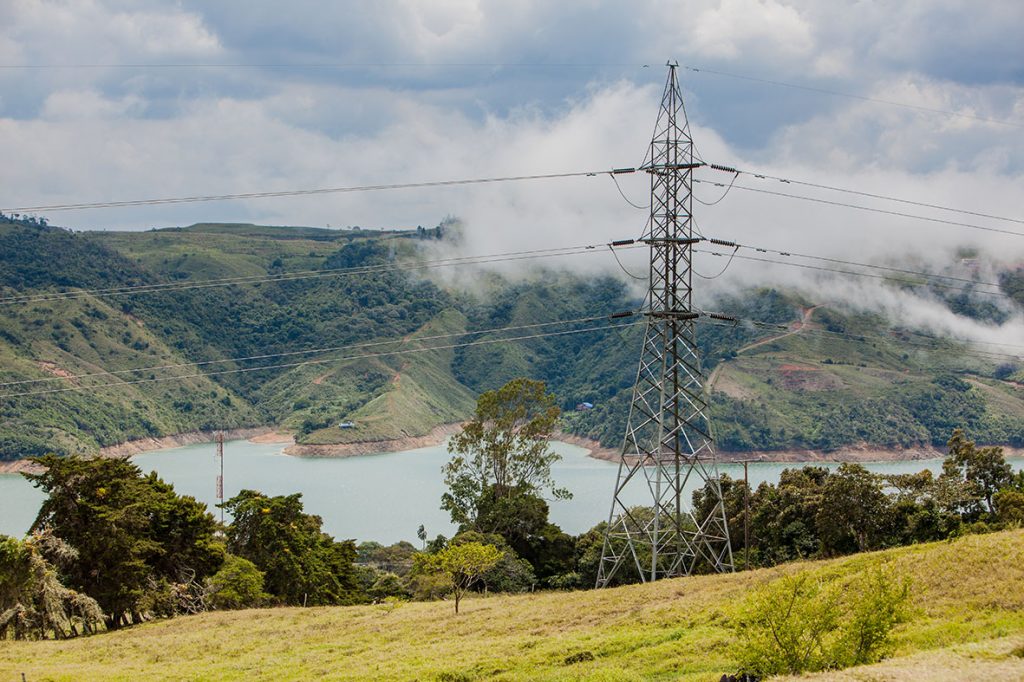

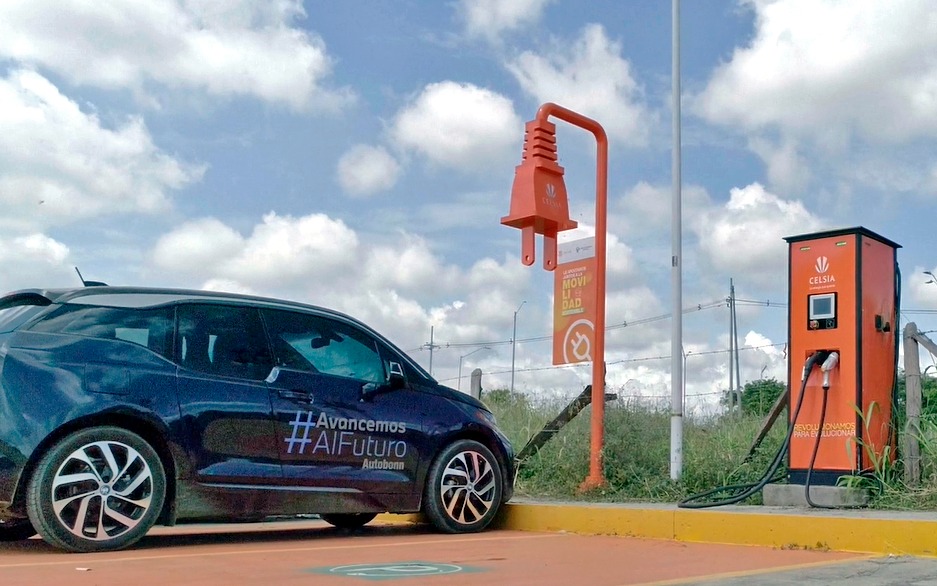

In terms of mitigation, Celsia made a commitment to reduce its greenhouse gas emissions through four measures:
- Focusing on energy efficiency. We offer a portfolio that allows customers to be efficient in their energy consumption, for example, with efficient LED lighting or our thermal districts. We also developed a diagnostic platform to explain to our customers their energy consumption, so they can identify inefficiencies in their production chain and feel accompanied in the permanent monitoring of their critical variables. Finally, we installed more than 263,000 smart meters, which help us to have a more accurate measurement of energy consumption. All these actions save energy, which leads to lower emissions.
- Using conventional (hydroelectric) and non-conventional (solar and wind) renewable sources. We seek to diversify investments in the electricity sector towards low-carbon operations: our goal is to have a generation matrix with at least 25% of non-conventional renewable energy sources (wind and solar)
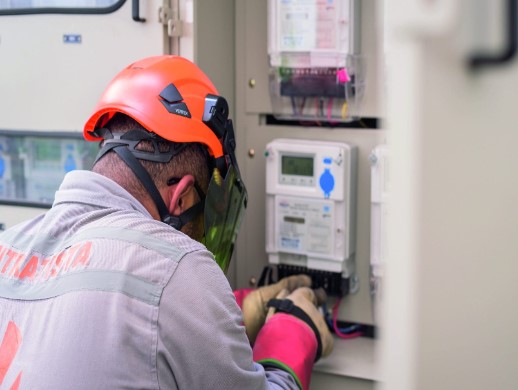

- Using conventional (hydroelectric) and non-conventional (solar and wind) renewable sources. We seek to diversify investments in the electricity sector towards low-carbon operations: our goal is to have a generation matrix with at least 25% of non-conventional renewable energy sources (wind and solar).
By the end of the third quarter of 2021, 99% of our energy generated came from renewable sources, being 5.4% from non-conventional renewable sources (wind and solar) and 93.6% from conventional renewable sources (hydro).
- Reducing the consumption of fossil fuels. At Celsia we use an internal carbon price, which allows us to make tangible and monetize the costs derived from the environmental, social and economic consequences of GHG (Greenhouse Gas) emissions. Keeping this negative externality in mind stimulates investment in renewable projects. In addition, we closed the operations at the Bahía las Minas coal-fired power plant in Panama, and we are moving forward with the construction and commissioning of a highly efficient natural gas-fired power plant in Colombia, where emissions are 50% cleaner compared to other fossil fuels such as coal.
In relation to adaptation measures, we are preparing based on the identification of risks and the definition of business continuity plans, that are necessary to implement solutions based on ecosystems, infrastructure, or technology, to reduce vulnerability, increase potential and evaluate assets and investments.
All these plans will be reviewed and updated periodically, with the objective of increasing their scope, whenever possible, taking advantage of advances in information, materials, processes, and technologies.
How does Celsia certify the offsetting performed to become a carbon neutral company?
Through greenhouse gas emission reduction certificates or carbon credits: each one means that one ton of CO2 is not emitted. Let’s understand it better with two specific actions:
- Certified Emission Reductions (CERs) or carbon credits, for compensation for avoided emissions, through renewable energy generation projects, accredited to reduce them. Each certificate means the reduction of one ton of CO2 that is not emitted into the atmosphere, a mechanism that Celsia used for emissions avoided through clean energy projects (hydro, solar and wind).
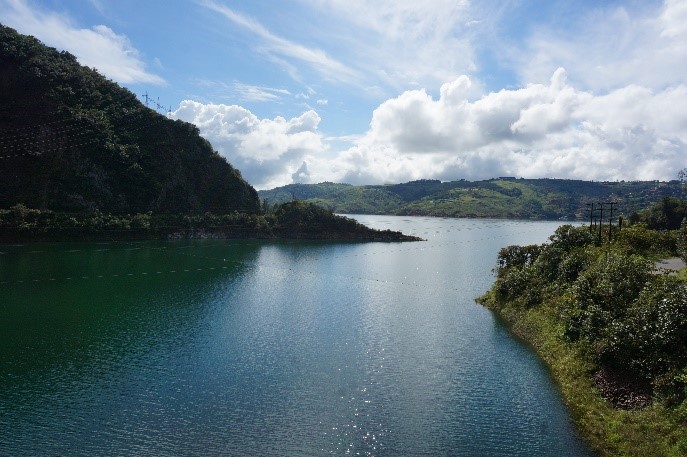

- Certified Emission Reductions (CERs) by carbon capture compensation systems, such as, for example, those carried out by the ReverdeC restoration program, since trees, due to their photosynthetic capacity, remove CO2 from the atmosphere and transform it into oxygen. Through this ecological restoration program, Celsia has already planted more than 8 million trees voluntarily in Valle del Cauca, Tolima and Antioquia.
- The base year in which Celsia declares itself carbon neutral is 2021, thanks to the verification and certification process carried out with Icontec in the first quarter of 2022.
Click here to find the Neutral Carbon Certificate.
Click here to view the recertification process
Click here to see our scope 3 emissions
We understand that the effects of climate change give rise to vulnerabilities in our operations. That is why, we are projecting an increasingly cleaner and more balanced energy matrix, with a high share of renewable energies. For more information, click here.
The Greenhouse Gas Inventories and external verification certificates are presented below:
- Certificate Celsia Colombia 2022 – Certificate Celsia Centroamérica 2022
- Certificate Celsia – Colombia 2020 – Certificate Celsia Centroamerica 2020
- Celsia Certification – Colombia 2019 – Celsia Certification – Central America 2019
- 2018 Celsia Certification – 2018 Celsia GHG Inventory – GHG Inventory Central America 2018 – 2018 Colombia GHG Inventory
- Celsia Colombia Certification 2017 – Celsia Panama Certification 2017 – Celsia GHG Inventory 2017 – Central America GHG Inventory 2017 – Colombia GHG Inventory 2017
- Colombia Certification 2016 – Colombia GHG Inventory 2016 – Central America Certification 2016 – Central America GHG Inventory 2016 – Colombia and Central America GHG Inventory
Since 2015, the Company has been reporting to the Carbon Disclosure Project (CDP) on climate change. See these reports below:
These reports and their results are available on the CDP website.
The organization has identified some of the most important risks associated with climate change that must be studied in upcoming years due to the effect they could have on the business:
- Decrease or total loss of energy generation capacity.
- Reduction of the capacity of hydroelectric plants.
- Denial of permits for the construction of new plants.
- Political and social instability.
- Transitional & Physical risks related with climate change. To know more clic here.
- To know more about Adaptation Plan click here, clic here.
Possible effects of climate change in the sector that would impact Celsia:
- Eco-efficiency
We use natural resources in the most efficient way, since the continuity of our business over time depends on it. For this reason, we implement best practices for saving energy, proper disposal of solid waste, landfill management and control of atmospheric emissions. For more information click here.
We manage biodiversity and ecosystem services as a material issue throughout our value chain. To read more about our Commitment to Biodiversity and No Deforestation click here.
We therefore use the highest environmental standards, assess risks, dependencies and impacts and apply the mitigation hierarchy principle to minimize the net loss of biodiversity and we strive to be a net positive company. Celsia’s commitments to Biodiversity conservation can be found here.
Since 2016, Celsia has been implementing ecological restoration activities through the ReverdeC program. Thus, by the end of 2022, a total of 6.191 hectares of vegetation has been restored in the departments of Antioquia, Tolima, Atlántico and Valle del Cauca, in 41 watersheds, with a total of 12 million trees planted. Learn more about the project. View more.




At our facilities in Colombia and Central America, as part of our biodiversity management, we have registered 1183 species on the International Union for Conservation of Nature (IUCN) Red List and 150 species on national and regional lists. We coordinate actions for their conservation and protection. For more details, See.
We believe that cooperation and working together enable the conservation and restoration of ecosystem services and biodiversity. We publish biodiversity information in a transparent manner, generating scientific and academic knowledge. For more details, click here.
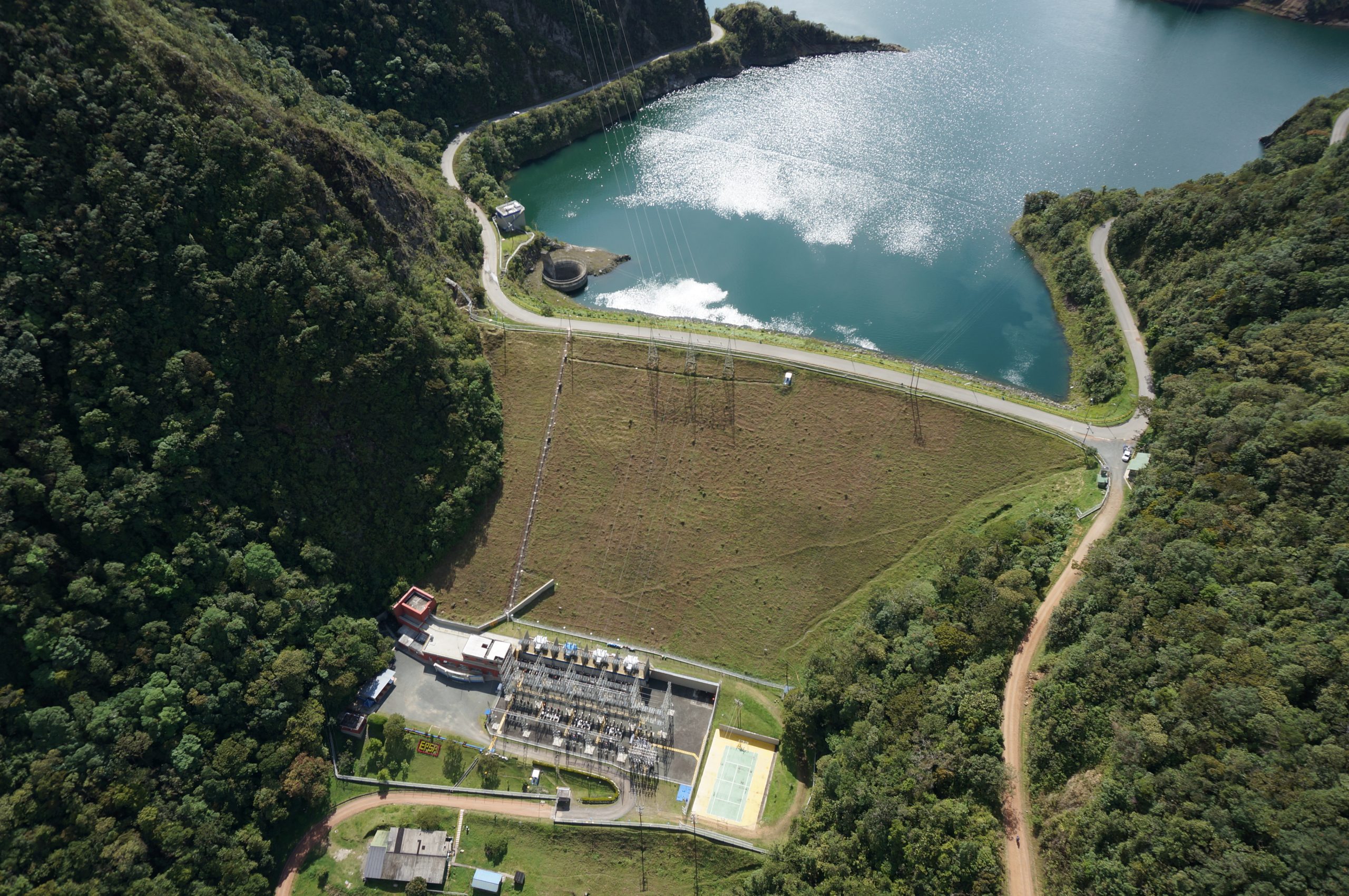

Calima, a paradise protected by all
Two species of orchids new to science
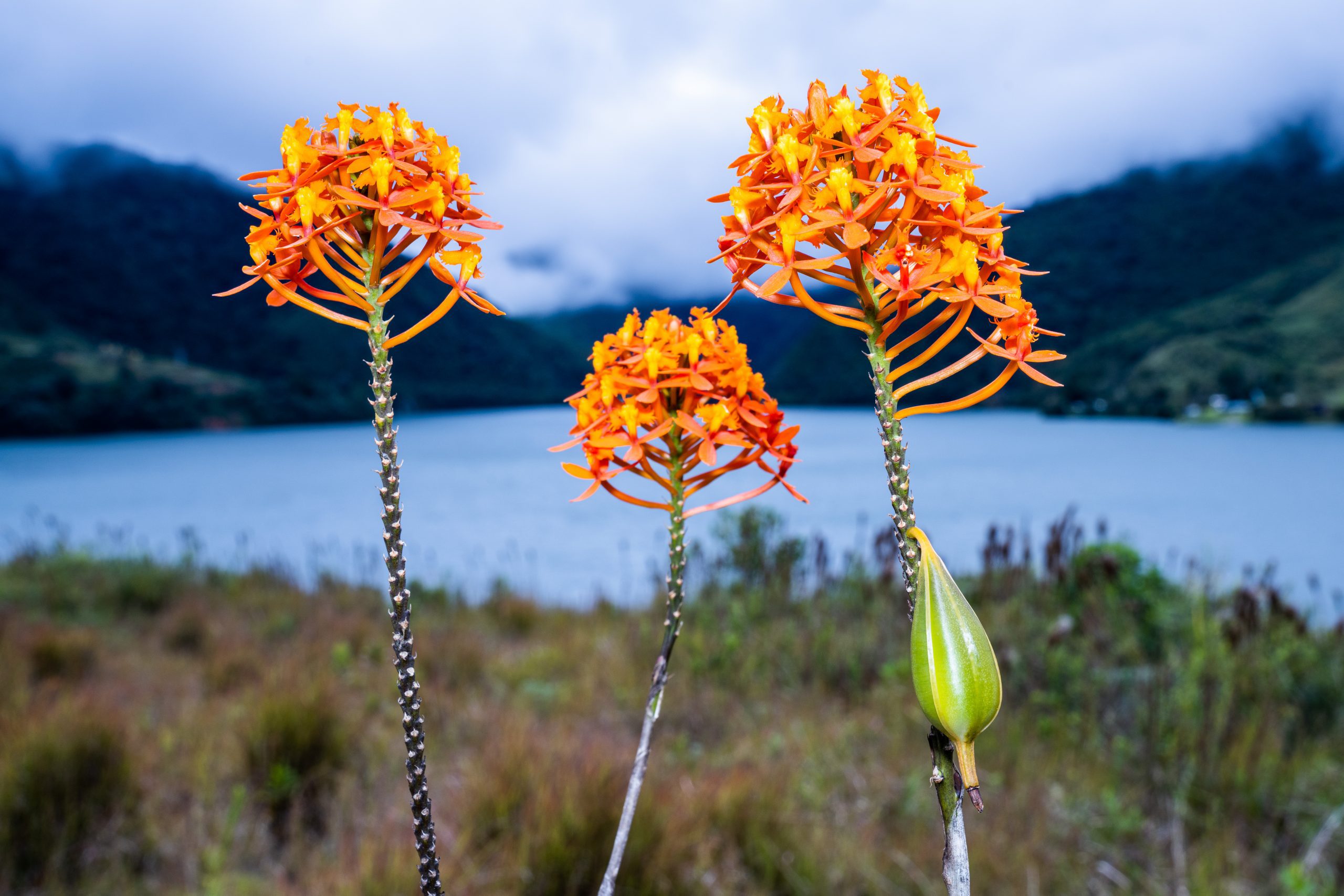



An Andean bear was seen by a child and his grandfather in Calima El Darién, in Valle del Cauca. Look at it.
Globally, the amount of water that can be used for different human activities has been an ongoing concern due to experiences in different countries where disruptions in water availability can lead to serious impacts on socio-economic and ecological systems.
The World Business Council for Sustainable Development (WBCSD) identifies the following water-related risks to businesses worldwide: increased cost and operational risks, regulatory and reputational risks, employee and customer health risks, market and product risks, financial risks (WBCSD).
International organizations have conducted studies on the state of water and its problems at the global level, and water scarcity is considered a significant and growing threat to the environment, human health, energy security and the world food supply (Pereira et al. 2009, at: PNUMA, 2012).
For this reason, tools have been developed to help companies measure the dimension of and understand the water availability problem, allowing them to assess current water conditions and possible future projected scenarios.
Global Water Tool - GWT


Global Water Tool –GWT-
is a tool developed by the World Business Council for Sustainable Development (
WBCSD
) that uses coordinates and data regarding water use for each of the facilities assessed. The data on water use are used to elaborate standardized reports but not to assess water use of a certain company in the surroundings in which it is located. It also allows comparing the area where the company is located and its operating sites, to determine whether they are located in areas of water scarcity or risks.
To apply the tool, the following power plants were considered for analysis: thermal, run-of-river hydroelectric and reservoir power plants. In order to make the analysis more practical, all the run-of-river hydroelectric power plants were grouped together, as well as those with reservoirs.
When applying this tool, the results do not show critical water resource situations in any of the areas where we are operating. On the contrary, they show abundant water availability in all areas. For more details, click here.
To apply the tool, the following power plants were considered for analysis: thermal, run-of-river hydroelectric and reservoir power plants. In order to make the analysis more practical, all the run-of-river hydroelectric power plants were grouped together, as well as those with reservoirs.
When applying this tool, the results do not show critical water resource situations in any of the areas where we are operating. On the contrary, they show abundant water availability in all areas. For more details, click here.


Aqueduct WRA is a global tool for mapping water risks which helps companies, investors, governments and users in general to understand how and where to locate the areas evidencing water risks.
Through the geographical position and location of the company, this tool provides several data and maps that show potential water risks, both physical, as well as regarding regulation and reputation. It also provides results by taking into account different factors, each of which consists of an associated measurement scale.
In general, for all our facilities, the overall results, qualitative and quantitative physical water risks show low to medium values, meaning that the power plants are not exposed to significant risks regarding water quantity or quality.
We offer a diversified generation matrix, with innovative and efficient services, to ensure the necessary resources for our operations and services. For more information, click here.

